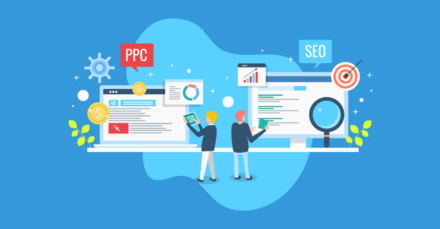Unified Search – How SEO and Paid Search Can Co-Exist and Improve ROI
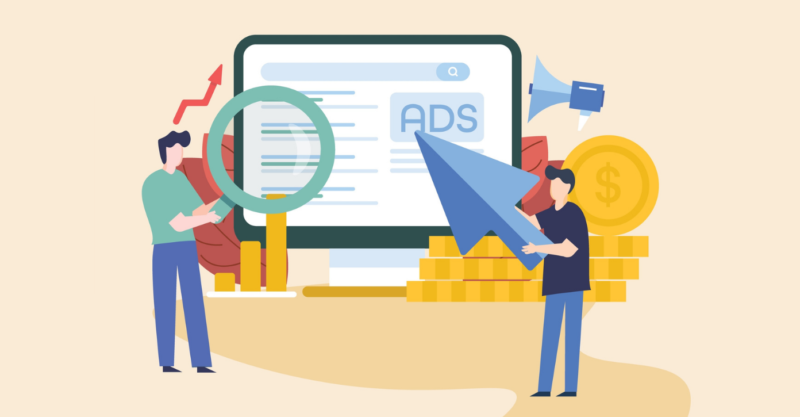
We recently ran a session at Masterclassing’s Workshop Week where QueryClick’s Head of Paid Media, Malcom Gibb, explored why you need to ensure that SEO and Paid activity co-exist in a better way to ensure that you avoid cannibalisation and wasted budget using a Unified Search approach.
If you missed the session, don’t worry. In this blog, we’ll cover all the key takeaways that were covered by Malcolm.
Some context: Google moved the goalposts and CPCs are now too expensive
A quick “raise your hand” poll at the beginning of the session indicated that a significant percentage of the audience felt that generic costs and CPCs are too expensive for the return they actually deliver.
And this is absolutely our assessment of the situation. Generic search is now:
- highly competitive
- expensive
- hard to measure and attribute accurately
And, now extremely difficult to manage and scale because of two main changes to Google Ads:
- “Invisible spend” – this year Google announced you would ‘see less search terms in your account’ for insignificant volume queries, meaning that in your search term reports there is a substantial volume of ‘invisible’ spend. In the case above we see over 20% of our ad spend is not accounted for in search term reports. Creating an increasingly complex environment to drive efficiency and scale campaigns – without being able to see the individual user search queries.
- “The goalposts have changed” – exact is not exactly exact anymore! Since 2018 Google has changed the goalposts and started serving close variants on our exact match keywords meaning less control on CPCs. In fact, on some ad accounts we see, on pure exact (in this case an exact brand keyword) CPCs have continued to rise considerably as they end up entering auctions we would not have wanted to. In the good old days of single keyword Ad groups!
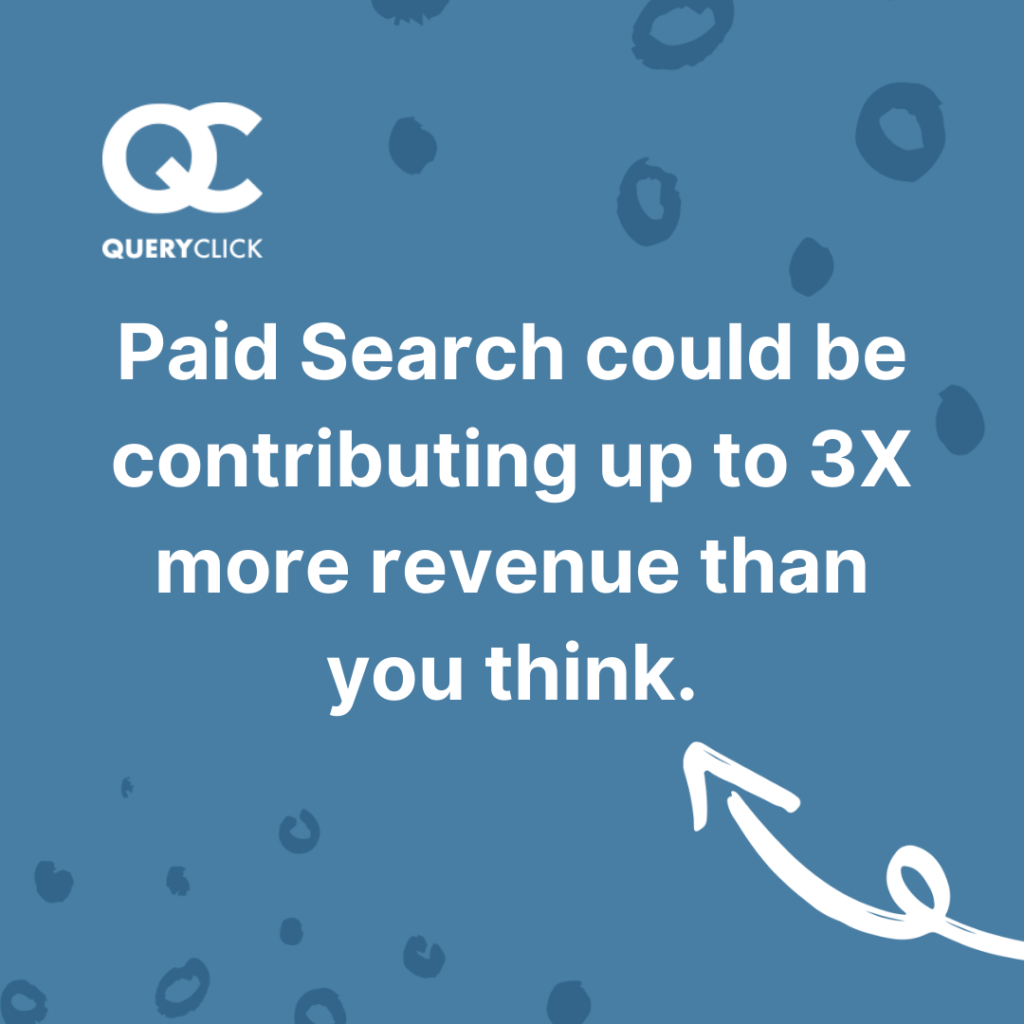
The upshot? Your Paid Search activity could be contributing up to 3X more revenue than you think it is. But more on that later.
In the remainder of this blog we want to help you look at how to:
- Reduce cannibalisation across both Paid and Organic – stop spending money where it doesn’t need to be spent
- Drive Incremental Performance – get more out of your overall Search performance – true incremental growth and not just discipline shift
History means SEO and Paid typically sit apart
This is because they have historically been treated as such.
2 distinct channels
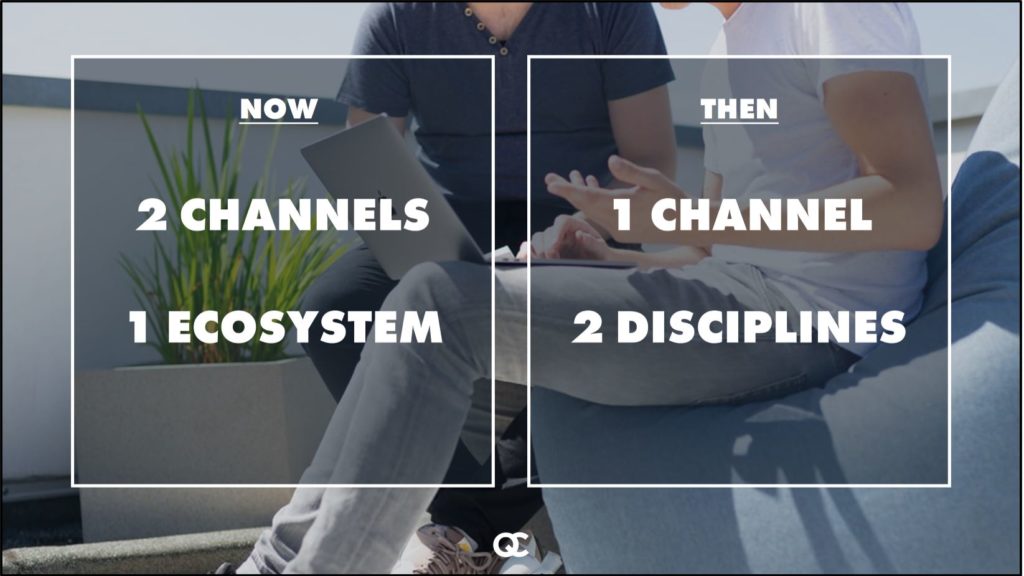
SEO and PPC have been seen as two separate channels, operating in the same environment.
We need to shift this mindset and start treating Search as a single channel.
With two core sub disciplines – SEO & PPC. Developing integrated strategies to achieve maximum performance within Search – rather than the siloed “us vs them” mentality that does exist.
The lines are increasingly blurring
Why does this need to change?
The lines between Paid and Organic search are becoming increasingly blurred. We should treat both as a single ecosystem for maximum impact. Paid Ads dominate the landscape, but Organic drives brand awareness and visibility – both working together synergistically.
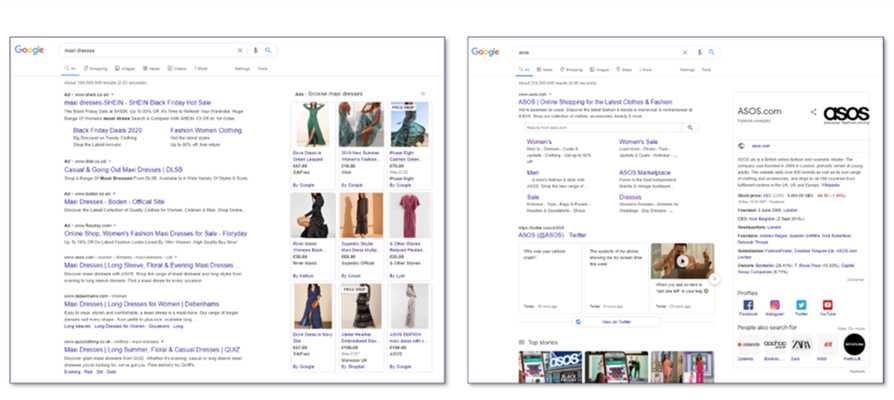
Actual search results are driving the change too
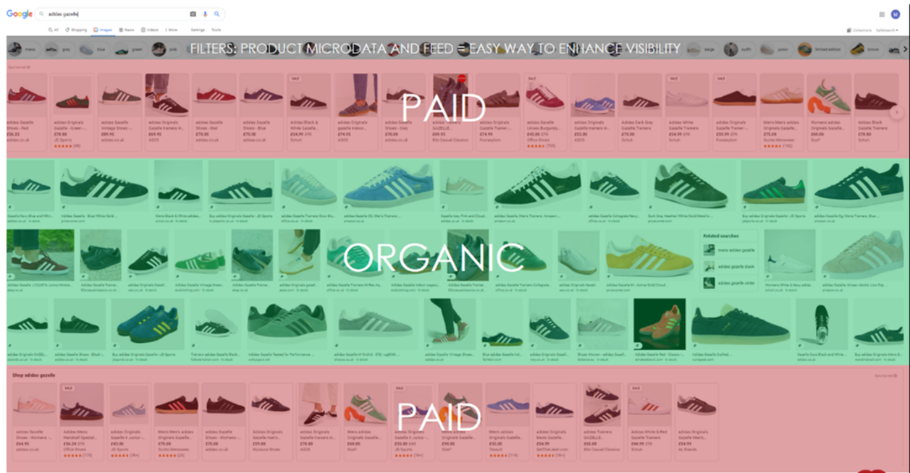
And on top of that, Google are blurring the lines even further. Take a look at any Image SERP today below and you will see a page full of products.
Paid comes top and bottom with shopping ads. Meanwhile organic listings from the newly introduced Google Surfaces update fills the fold on most transactional terms.
This is brilliant news for retailers. However how do we track, attribute and avoid cannibalisation across the ecosystem?
Reducing cannibalisation and avoiding budget wastage
Understanding where we’re potentially cannibalising our Organic traffic is vital.
Narrow focus on ROAS/ROI from Paid Search has historically meant that brands focus on maximising the revenue driven via PPC. Without much scrutiny on whether or not that traffic could have been gained via Organic Search.
In some marketplaces, a certain degree of cannibalisation is needed in order to protect branded search space. However, this is not always true and can lead to inflated brand spend in order to drive essentially pre-qualified traffic.
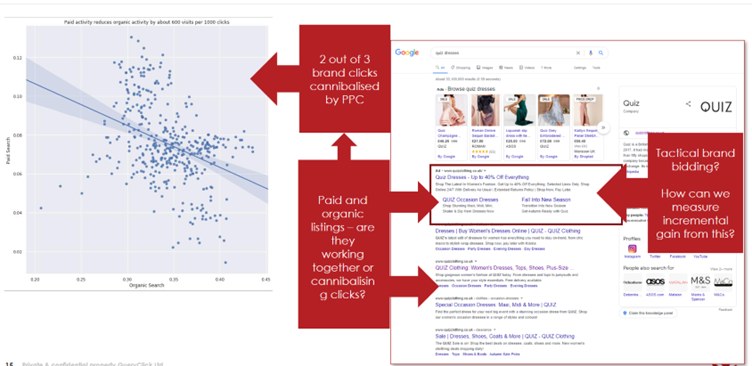
Bidding on brand is the first thing that comes to mind when we talk of cannibalisation. However there are tactical uses for bidding on brand such as promoting discounts, re-engaging users and protecting a brands’ space.
However, how do we avoid cannibalising our organic traffic in this space?
One study we conducted found that 2 out of 3 clicks overall were on paid results, cannibalising the organic listing. We estimated that they could have saved £40k from reducing exposure in this space.
There are alternative ways to protect brand space whilst still bidding on brand including audience layering, bidding strategy and demographic modifiers. These can all effectively reduce the wasted click spend happening on brand. However the first step is to identify the behaviour of each listing.
Bringing Paid and Organic together for a holistic view
In its most basic form, marrying both Paid and Organic data together allows us to see the behaviour, cannibalisation and opportunity of keywords in both channels.
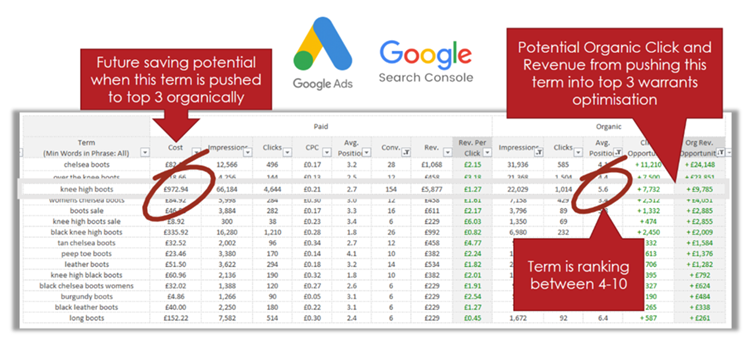
Pulling this data is relatively easy, and can be done from the Google Ads interface through the paid vs organic report. You are also able to pull your GSC data and join it together if you want more metrics in there.

This allows you to see:
- where paid and organic overlap at keyword level – understanding in which position organic and paid is showing. We can use this data to understand the relative behaviour of both listings
- where organic and paid have high positions – and Paid seems to be taking most of the traffic – we can identify areas where we are able to pull back on budget to save and re-allocate
- on the flip side, we can also identify where we can push paid ads where organic positions are low and need optimising with SEO. Alongside potential revenue gains from improving organic results
This is the approach and methodology we used to effectively save Airbnb £4.2m in redundant media spend.
Driving incremental ROI from Paid Search
Generics provide the biggest opportunity for us to scale and drive incremental ROI but:
- brand has its limitations
- generics, as we pointed out can be extremely expensive (although valuable)
A cost-per-cookie mindest – get new users into the journey and nurture them through touchpoints to conversion.
The key to driving incrementality through generics? Effective attribution.
Generics work, but generally in PPC we are told by clients they are not returning good ROI, or not working. Well, what if you could prove and make a business case that generics = new revenue.
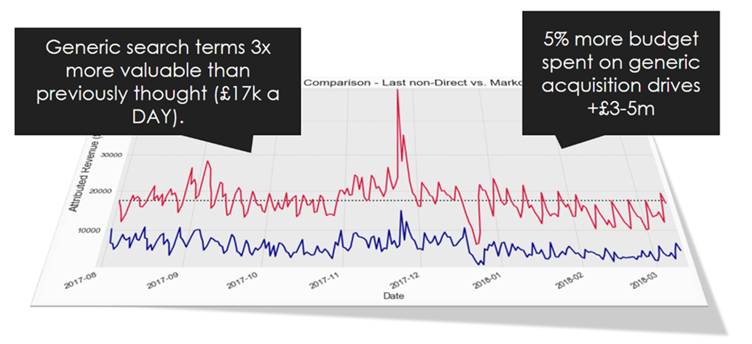
In the case above we applied our bespoke attribution software – Corvidae to understand that generic search activity was actually delivering 3x the value being reported through default last non direct click models. This meant we were able to take action and make the case to increase budget by 5% with an estimated incremental uplift of revenue of +£3m-5m.
Better attribution in search
Deploying attribution across your Paid Search activity, and across channel, can help you understand, at a visit level, where to optimize and effectively deploy budgets.
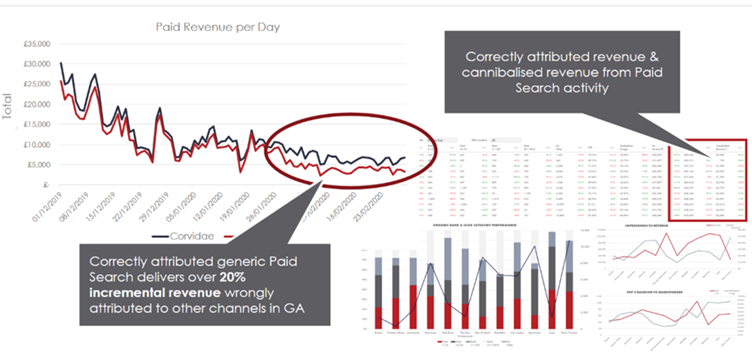
Through utilising our in-house attribution solution Corvidae we have helped clients re-attribute revenue from wrongly attributed sources – such as direct through Google Analytics – more accurately. And have been able to show the true ROI of what Paid Search is delivering.
Unbundle saturated generic CPAs
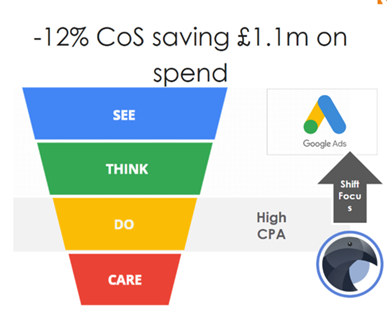
This becomes increasingly powerful at campaign and category level and allows us to effectively re- allocate ineffective budget. Into high performance areas achieving incrementality.
By shifting budget focus towards higher funnel awareness-driving generics – and deploying robust attribution to measure the incremental impact of non last-click converting generics – we are able to scale Paid Search campaigns.
Applying this approach has helped us deliver a -12% CoS overall across a £1.1m spend for a high street retailer.
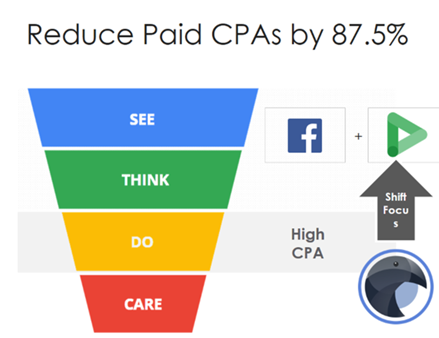
De-silo and target customers earlier in the conversion path
Similarly, taking an approach to de-silo’ing channels like Paid Search, social, programmatic and organic. And accurately measuring higher funnel activity allows you to scale across channels.
This approach has helped us reduce paid CPAs on a client by 87.5%.
So, in summary, to reduce cannibalisation and wastage, whilst driving incremental growth – Unified Search is the future. And you need to adopt it to:
- Integrate the Paid Search and Organic disciplines
- Reduce wastage and improve ROI
- Achieve true incremental revenue growth across your channels through fully aligned attribution
Key takeaways?
- Understand how your Paid and Organic are working together and use data to reduce cannibalisation and find new incremental revenue opportunities
- Deploy an attribution solution across channel to accurately measure Paid impact in order to scale your Paid performance
The Need For Speed: Unlock SEO ROI With Page Speed Optimisation
QueryClick’s Digital Strategy Director, Scott Donnelly, also took part in Masterclassing’s Workshop Week in April. Find out about his session on page speed optimisation in the round up blog.
Own your marketing data & simplify your tech stack.
Have you read?
Chrome’s announcement on dropping cookie opt-in last month closed the door on a 5 year saga for marketers. But what is the landscape like in 2025 for cookie-based measurement?
Generative AI is transforming the way that marketers plan and assemble content for their Paid Ads. As big platforms like Google, Meta and TikTok increasingly build the tools needed to...
In a surprising move that has sparked heated debate, Mark Zuckerberg announced on his Instagram that Meta will be reducing its levels of censorship and in particular fact-checking on its...
